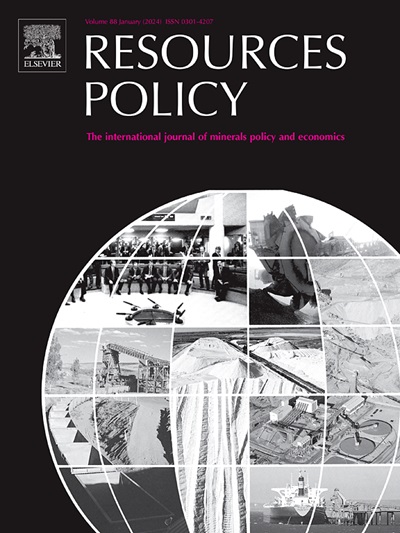Is America dematerializing? Trends and tradeoffs in historic demand for one hundred commodities in the United States
IF 10.2
2区 经济学
0 ENVIRONMENTAL STUDIES
引用次数: 0
Abstract
We introduce a broad yet detailed data framework to assess the physical basis of modern industrial societies based on trends in their commodity demand. Using the example of the United States from 1900 to 2020, we consider both absolute commodity demand (ABS) and demand indexed to economic activity, otherwise known as intensity of use (IOU), for one hundred commodities that constitute the bulk of the material entering the US economy annually. The commodities selected are generally raw materials that enter the economy as industrial inputs that are further processed and incorporated into intermediate and finished products. The data show that ABS for nearly all the 100 commodities rose steadily until 1970 with IOU consistently rising for many as well. After that time, the trends for different groups of commodities start to diverge. Comparing ABS and IOU for the years 1970 and 2020 brings into focus the divergent trends. We find that for many metals and mineral commodities, domestic consumption fell over the last half century, though much of this missing consumption may represent production displaced to other locations. For a larger cross section of commodities, consumption grew but more slowly than the rest of the economy, as per capita consumption for many basic industrial and consumer commodities remained roughly steady. For a small group of commodities, including technology metals, consumption grew faster than the rest of the economy between 1970 and 2020. By examining a large range of commodities over time, we develop a disaggregated framework for more rigorously assessing whether contemporary industrial societies are dematerializing, that is, reducing the amount of physical material necessary for their economies to function. Though restricted to the United States, this study has relevance to other countries around the world in elucidating the underlying physical basis of modern economies with implications for environmental quality, economic competitiveness, and national security.
美国正在非物质化吗?美国100种商品历史需求的趋势和权衡
我们介绍了一个广泛而详细的数据框架,根据其商品需求的趋势来评估现代工业社会的物质基础。以1900年至2020年的美国为例,我们考虑了100种商品的绝对商品需求(ABS)和与经济活动挂钩的需求(也称为使用强度(IOU)),这些商品构成了每年进入美国经济的大部分材料。所选择的商品通常是作为工业投入进入经济的原材料,这些投入被进一步加工并纳入中间产品和成品。数据显示,直到1970年,几乎所有100种大宗商品的ABS都在稳步上升,许多大宗商品的IOU也在持续上升。此后,不同类别商品的走势开始出现分歧。通过对1970年和2020年ABS和IOU的比较,可以看出两者的不同趋势。我们发现,对于许多金属和矿产品,国内消费在过去半个世纪里下降了,尽管这种减少的消费很大程度上可能意味着生产转移到了其他地方。对于更大范围的商品,消费增长了,但比其他经济领域增长得慢,因为许多基本工业和消费品的人均消费基本保持稳定。1970年至2020年间,包括科技金属在内的一小部分大宗商品的消费增速超过了其他经济领域。通过长期考察大量商品,我们开发了一个分解框架,以更严格地评估当代工业社会是否正在非物质化,即减少其经济运行所需的物理材料的数量。尽管本研究仅限于美国,但在阐明现代经济的潜在物理基础以及对环境质量、经济竞争力和国家安全的影响方面,本研究与世界其他国家具有相关性。
本文章由计算机程序翻译,如有差异,请以英文原文为准。
求助全文
约1分钟内获得全文
求助全文
来源期刊

Resources Policy
ENVIRONMENTAL STUDIES-
CiteScore
13.40
自引率
23.50%
发文量
602
审稿时长
69 days
期刊介绍:
Resources Policy is an international journal focused on the economics and policy aspects of mineral and fossil fuel extraction, production, and utilization. It targets individuals in academia, government, and industry. The journal seeks original research submissions analyzing public policy, economics, social science, geography, and finance in the fields of mining, non-fuel minerals, energy minerals, fossil fuels, and metals. Mineral economics topics covered include mineral market analysis, price analysis, project evaluation, mining and sustainable development, mineral resource rents, resource curse, mineral wealth and corruption, mineral taxation and regulation, strategic minerals and their supply, and the impact of mineral development on local communities and indigenous populations. The journal specifically excludes papers with agriculture, forestry, or fisheries as their primary focus.
 求助内容:
求助内容: 应助结果提醒方式:
应助结果提醒方式:


